
learning about packaging for IC semiconductor from the die form until complete
- Subject:
- Electronic Technology
- Engineering
- Manufacturing
- Material Type:
- Module
- Author:
- Puteri Nadia Dayanie Megat Sabri
- Date Added:
- 11/27/2017

learning about packaging for IC semiconductor from the die form until complete

This is a course in industrial safety practices and training. The course content has been alighed with OSHA-10 standards. This means that, should the instructor be OSHA-10 certified, the students will be able to apply for their OSHA-10 cards upon completing the course. Subjects covered include Workers Compensation, Lock Out, Tag Out Procedures, Industrial Hygiene, Electrical Safety, among others. The course is set up for a 15 week semester and includes mid-term and final exams. The course can be customized and cut down to a shorter session as needed.
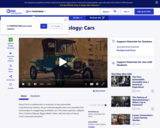
This video segment adapted from A Science Odyssey looks at the invention of the automobile and the development of mass production.
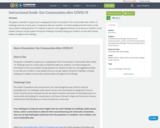
This guide is intended to support you in adapting the State of Innovation’s “Our Communities after COVID-19” Challenge case into a lesson plan to implement with your students. It includes background information on the case, problem solving questions for students to work on, and suggested activities to use with your students. It also explains how you can get support during the Challenge, including helping your students connect with industry leaders throughout the Challenge.

Processess used to operate on different types of material in the manufacturing industry are described.

This course provides additional instruction and practice in the use of precision measuring tools, lathes, milling machines, and grinders. Emphasis is placed on setup and operation of machine tools including the selection and use of work holding devices, speeds, feeds, cutting tools, and coolants. Upon completion, students should be able to perform basic procedures on precision grinders and advanced operations of measuring, layout, drilling, sawing, turning, and milling.

This course introduces machining operations as they relate to the metalworking industry. Topics include machine shop safety, measuring tools, lathes, drilling machines, saws, milling machines, bench grinders, and layout instruments. Upon completion, students should be able to safely perform the basic operations of measuring, layout, drilling, sawing, turning, and milling.

MAC-121, Intro to CNC is a course meant to teach students the basics of CNC machining. Concepts covered include safety, measurement, measuring tools including micrometers, machine materials, CNC machine operations, CNC programing and coordinate systems, among others.

This course introduces the programming, setup, and operation of CNC turning centers. Topics include programming formats, control functions, program editing, part production, and inspection. Upon completion, students should be able to manufacture simple parts using CNC turning centers.Resources include lectures, supplemental videos, and projects. This coruse was created using the Odigia platform.

This course introduces the manual programming, setup, and operation of CNC machining centers. Topics include programming formats, control functions, program editing, part production, and inspection. Upon completion, students should be able to manufacture simple parts using CNC machining centers.

This course provides an introduction to a variety of material-working processes that are common to the machining industry. Topics include safety, process-specific machining equipment, measurement devices, set-up and layout instruments, and common shop practices. Upon completion, students should be able to safely demonstrate basic machining operations, accurately measure components, and effectively use layout instruments.

This course covers advanced methods in setup and operation of CNC turning centers. Emphasis is placed on programming and production of complex parts. Upon completion, students should be able to demonstrate skills in programming, operations, and setup of CNC turning centers.
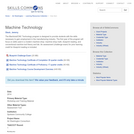
The Machinist/CNC Technology program is designed to provide students with the skills necessary to gain employment in the manufacturing industry. The first year of the program will focus on skills used in a modern machine shop: machine shop math, blueprint reading, and conventional machine tool theory and lab. An assessment (challenge exam) for prior learning credit for blueprint reading is included.
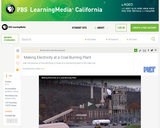
This video from KET traces the energy transformations that occur when coal is burned to produce electricity. Some of the mechanical processes are also described.
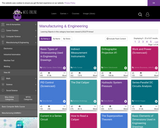
The Wisc-Online open educational resource library contains 25 free learning objects that can help you learn, study, or teach Manufacturing & Engineering - available to teachers and students under a Creative Commons license.
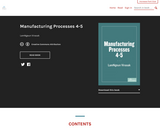
Short Description:
This textbook provides an introduction to the important area of manufacturing processes. This text will explain the hows, whys, and whens of various machining operations, set-ups, and procedures. Throughout this text, you will learn how machine tools operate, and when to use one particular machine instead of another. It is organized for students who plan to enter the manufacturing technology field and for those who wish to develop the skills, techniques, and knowledge essential for advancement in this occupational cluster. The organization and contents of this text focus primarily on theory and practice. Order a print copy: http://www.lulu.com/content/paperback-book/manufacturing-processes-4-5/24461389
Long Description:
This textbook provides an introduction to the important area of manufacturing processes. This text will explain the hows, whys, and whens of various machining operations, set-ups, and procedures. Throughout this text, you will learn how machine tools operate, and when to use one particular machine instead of another. It is organized for students who plan to enter the manufacturing technology field and for those who wish to develop the skills, techniques, and knowledge essential for advancement in this occupational cluster. The organization and contents of this text focus primarily on theory and practice.
Order a print copy: http://www.lulu.com/content/paperback-book/manufacturing-processes-4-5/24461389
Word Count: 48105
ISBN: 978-1-63635-048-6
(Note: This resource's metadata has been created automatically by reformatting and/or combining the information that the author initially provided as part of a bulk import process.)
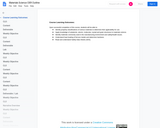
Syllabus for Materials Science course that also uses:
Material Science FlexBook: https://flexbooks.ck12.org/user:bw9ycmlzdgvabglubmjlbnrvbi5lzhu./cbook/material-science/
NSF Materials Science and Technology module: http://matse1.matse.illinois.edu/metals/intro.html
NDT Resource Center: https://www.nde-ed.org/EducationResources/CommunityCollege/Materials/cc_mat_index.htm
Upon successful completion of this course, students will be able to:
Identify property classifications of various materials to determine their applicability for use.
Apply knowledge of subatomic, atomic, molecular, crystal and grain structures to materials science.
Identify materials commonly used in the manufacturing environment and safety/health issues.
Understand heat treating of ferrous metals and determine hardness.
Read and understand Safety Data Sheets (SDS).
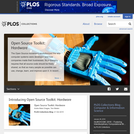
The Open Source movement revolutionized the way computer systems were developed and how companies made their businesses. Its philosophy requires that all source code should be freely shared, so that as many people as possible can use, change, learn, and improve upon it. In recent years the increasing availability and low costs of electronic components, processors and 3D printers meant that an open model of development has taken root also in the world of hardware, including the development of scientific lab equipment. The implications for research can hardly be overstated: Open Labware designs are almost always cheaper than closed source ones, allow for distributed development and, critically, customization by the end user, the lab scientist. PLOS welcomes submissions in this field.

Students will work through a manufacturing work flow simulation by making paper airplanes to meet a quota within a specific time frame.

We will be using three primary resources.We will use the Occupational Safety and Health Administration (Federal Requirements) to navigate and search for PIT (Powered Industrial Trucks) requirements.We will use the https://www.dir.ca.gov/dosh/ State of California Department of Industrial Relations - since this is a California based course.We will use a short safety videos from You Tube that ilustrates the safe operation of PIT.